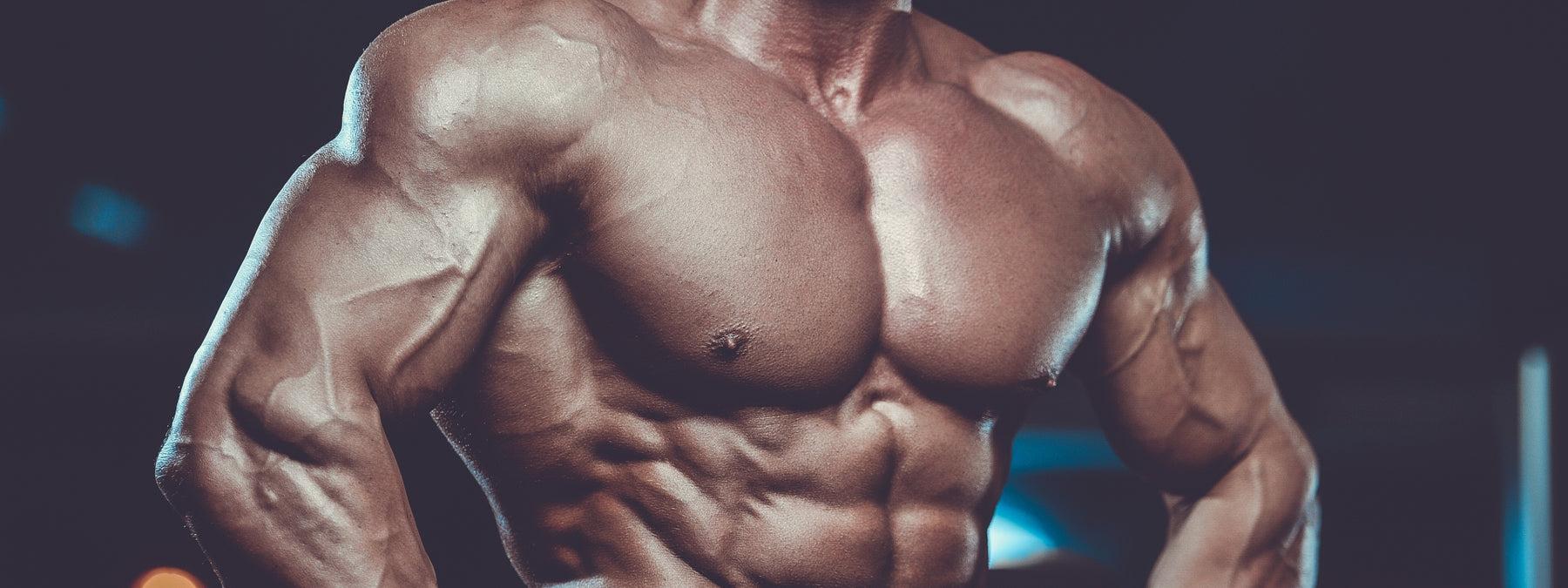
Is Turning Fat Into Muscle Even Possible?
If you’ve ever seen any mainstream attempt of explaining fitness in a magazine, you’ll see “doing this” or “eating that” will quite literally turn fat into muscle.
Poof.
So What Do They Mean?
I don’t really know the origins of when this myth came along, but I’m guessing a long time ago someone was trying to dumb down the whole process of burning fat and building muscle to someone.
Related - How to Gain Muscle Mass Fast
I’m sure that’s not how it went, but the process of burning fat is completely separate from the process of building muscle. The two processes are related, though. This is where I think there was a huge oversimplification of the processes that actually happen in this phase.
Let me go over the process of building muscle, burning fat, and how to use this relationship to your advantage.
Building More Muscle
If you want to build muscle, you lift weights. Lifting weights helps you break your muscles down.
When you put that amount of stress on your body, it starts to adapt to it. This is why it is important to push yourself to increase how much you lift or how far you run — you are creating an environment where your muscles can become stronger.
Lifting weights or otherwise stressing the body causes damage to your muscle fibers. Once these muscle fibers get damaged, that muscle calls out for a unique cell called a satellite cell. These cells will rescue and repair or replace the damaged fibers.
This process, paired with a proper macronutrient-conscious diet, promotes the building of muscle. So the proper amount of protein, carbohydrates, and fat play a vital role. This is why eating junk foods are so unhealthy for you — all of those calories could have come from nutritious sources.
At the end of your workout, these damaged muscles are more receptive to the recovery-boosting effects of carbs and protein immediately post-workout.
Healthy Food Sources
I have a lot of friends ask me what I eat to lose as much weight as I have. When I start showing them pictures or naming off the steak, chicken, and awesome foods, I think they quit believing me.
Eating healthy doesn’t mean you have a salad every meal, either.
The best advice I can give is to follow the 80/20 rule when it comes to eating. That is, 80% of your foods should come from nutritious sources (a decent list below), and the remaining 20% can come from whatever you like.
So if you were eating a 2,000 calorie diet; you would want around 1,600 calories to come from nutritious sources, and 400 calories can come from whatever. Eat 400 calories of a candy bar, sweets, chips… whatever.
The key is logging your intake, being honest with yourself, and learning to nail those portions down. You really can have bacon cheddar fries with ranch drizzled on it… all while losing weight.
So here is a short, but decent, list of nutritious food sources you could start picking from. Get creative; it’s fun to have many colors and textures in your meal.
Here’s my simple list that I use to make my main food choices. Once I pick a protein, I can pick a carb and some fat to go with it and feast away. Never underestimate a seasoned steak with a few eggs.
Be adventurous and try new foods — you may find something that you really like.
Proteins
Simple list, great food.
- Steak
- Egg
- Chicken
- Bacon or pork loin
- Tilapia
- Salmon
- Tuna
- Bison
- Whey
Carbs
They aren’t as bad as they say.
- Oatmeal - Mixes great with whey
- Rice - Brown, black, white
- Sweet potatoes
- White potatoes
- Bananas
- Oranges
- Apples
- Quinoa
Fats
This is where the fun is.
- Olive oil
- Avocado
- Cheese
- Sour cream
- Milk
- Whole egg
- Salmon
- Nuts
- Full-fat yogurt
Measure your servings, they are calorie dense. But there’s nothing wrong with having a quarter cup of cheese and two tablespoons of butter on an eight-ounce potato — as long as you have calories for it and you are eating a well-balanced diet.
Burning More Fat
Combining some cardiovascular exercise with some resistance training gives you the best option for burning fat. You know exercise is good for you, but strength training also improves your overall health and helps burn fat.
This fast shift of exercise, strength training, and healthy eating habits yield quick results.
Strength training builds muscle mass, and that muscle needs calories to survive. When you perform strength training, you essentially are raising the number of calories you burn at rest throughout the day.
This is called your basal metabolic rate.
Muscle is a metabolically active tissue, so it burns more calories than fat.
Surprisingly, low-intensity exercise that was once known as the king of fat loss, it isn’t the best way to burn fat. While you will burn around 60% of calories from fat in a low-intensity exercise, you usually burn more calories overall.
So if you burn more calories overall during moderate and high-intensity exercise, you could wind up burning more calories from fat.
Take, for example, performing a 30-minute low-intensity workout would burn 200 calories. We can assume roughly 120 of those calories came from fat. On the other hand, a high-intensity workout would burn 400 calories, with roughly 140 calories coming from fat.
You’ve burned more calories overall, and you still burned more calories from fat than low-intensity.

Leave a comment